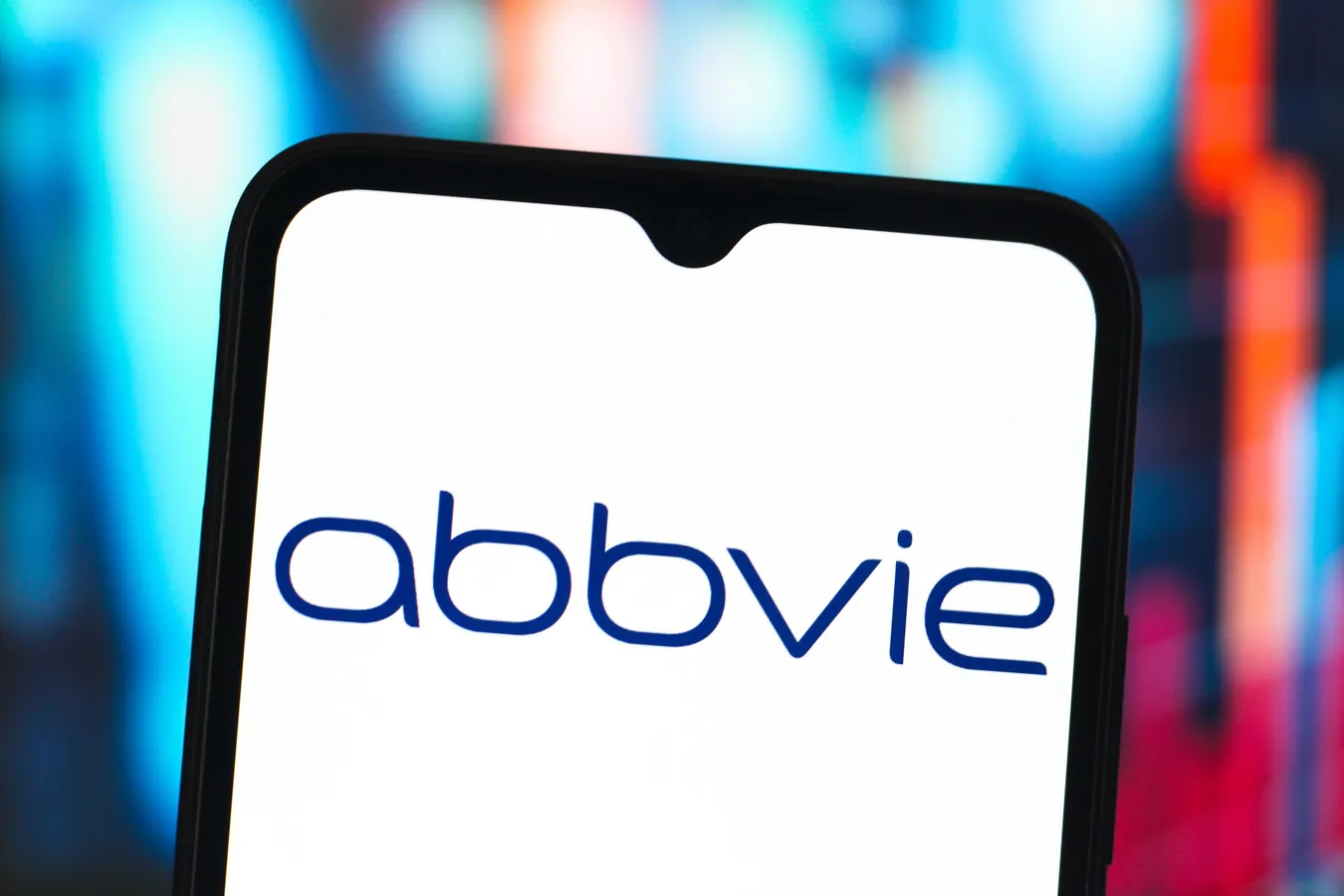By Contributor Thomas Fuller Trefis Team
CANADA – 2025/04/03: In this photo illustration, the AbbVie logo is seen displayed on a smartphone … More screen. (Photo Illustration by Thomas Fuller/SOPA Images/LightRocket via Getty Images)
SOPA Images/LightRocket via Getty Images
AbbVie (NASDAQ:ABBV) has distinguished itself as one of the top performers in the healthcare sector this year, with its stock rising by 6% while the broader S&P 500 healthcare index fell by 1%. This outperformance is indicative of investor confidence in the pharmaceutical giant’s ambitious transformation strategy as it navigates the post-Humira period.
AbbVie’s journey starts with recognizing the scale of its Humira challenge. Once the world’s leading pharmaceutical drug (excluding the Covid-19 vaccines), Humira achieved peak sales of $21.2 billion in 2022. However, biosimilar competition has severely impacted its market share, with sales dropping 58% from its peak to $9 billion last year. This decrease signifies a substantial revenue gap that could have incapacitated many companies.
Instead of yielding to this pressure, AbbVie has embarked on an aggressive acquisition strategy to enhance its portfolio and broaden its revenue sources. The company’s approach has been both methodical and significant, focusing on high-growth therapeutic areas with substantial market potential. For investors seeking lower volatility than individual stocks, the Trefis High Quality portfolio offers an alternative — having outperformed the S&P 500 and delivered returns surpassing 91% since its inception. Additionally, see – SOFI Stock To $30?
An Acquisition Spree with Strategic Intent
Since the start of 2024, AbbVie has executed an impressive series of acquisitions totaling over $22 billion in deal value. The acquisitions cover various therapeutic areas, showcasing the company’s dedication to diversification:
ImmunoGen (finalized February 2024) added oncology expertise in antibody-drug conjugates for $10.1 billion.
Cerevel Therapeutics (finalized August 2024) enhanced neuroscience capabilities for $8.7 billion.
Aliada Therapeutics (finalized October 2024) bolstered the company’s Alzheimer’s portfolio with anti-amyloid antibody technology for $1.4 billion.
Most recently, AbbVie revealed the acquisition of Capstan Therapeutics for up to $2.1 billion, concentrating on CAR-T cell therapies for autoimmune diseases.
The company also made smaller acquisitions of Nimble Therapeutics and Landos Biopharma during this timeframe.
This acquisition spree is indicative of more than just opportunistic dealmaking—it signifies a tactical plan to secure leadership positions in high-growth therapeutic sectors while minimizing reliance on any singular asset.
MORE FOR YOU
AbbVie’s history implies this acquisition strategy could yield remarkable returns. The firm’s 2016 collaboration with Boehringer Ingelberg serves as an example of this success. For an upfront investment of $595 million, AbbVie obtained global rights to what would become Skyrizi for psoriasis and related indications. That investment has proven immensely profitable, with Skyrizi producing $11.7 billion in sales in 2024. This success story offers a blueprint for how AbbVie’s current acquisitions might progress, contingent upon the company’s ability to effectively integrate these assets and realize their commercial potential.
Even with Humira’s declining sales, AbbVie managed to achieve 4% revenue growth last year, showcasing the resilience of its broader portfolio and the preliminary advantages of its acquisition strategy. The company anticipates accelerating revenue growth to high single-digits over the next few years, with even greater earnings growth projected as margins enhance.
Valuation Considerations and Market Premium
Investors have responded positively to AbbVie’s strategic methodology, boosting the stock to approximately $190 per share. At present, the company is trading at 18.5 times its trailing adjusted earnings of $10.27 per share. This valuation signifies a considerable premium relative to AbbVie’s historical average of 14x over the past three years and most major pharmaceutical competitors.
Bristol Myers Squibb, Merck, and Pfizer are trading at 10 times or less their trailing adjusted earnings, while Johnson & Johnson, Amgen, and Gilead command valuations of 14–15 times. AbbVie’s premium valuation illustrates investor faith in its growth strategy and operational capabilities.
This elevated multiple seems justified considering the company’s robust revenue growth trajectory and ongoing pipeline expansion. As the newly acquired assets contribute to growth and margins improve, the valuation premium may prove to be sustainable or even expand further.
However, we could be mistaken in our evaluation. AbbVie’s aggressive acquisition strategy has incurred costs to its balance sheet stability. The company currently holds $70 billion in debt against a market capitalization of $336 billion, leading to a debt-to-equity ratio of 21.3%—moderately above the S&P 500 average of 19.4%.
More concerning is the company’s cash position in relation to its asset base. With only $5.2 billion in cash and equivalents out of $136 billion in total assets, AbbVie’s cash-to-assets ratio is alarmingly low at 3.8%. This limited financial flexibility could limit future strategic opportunities or compel the company to rely more extensively on debt financing for future acquisitions.
AbbVie’s evolution from a Humira-reliant firm to a diversified pharmaceutical powerhouse represents one of the industry’s most ambitious strategic shifts. For investors ready to accept balance sheet risks and a premium valuation, the company’s execution history and growth potential position it as a possibly attractive long-term investment, even at current levels around $190 per share. On a connected note, are you aware that Merck might confront the same challenges AbbVie did a few years ago with Humira? Explore our insights on – Merck Stock’s Ticking Keytruda Time Bomb.
Now, there always remains a meaningful risk when investing in a single, or just a handful of stocks. Consider the Trefis High Quality (HQ) Portfolio which, with a collection of 30 stocks, has a track record of comfortably outperforming the S&P 500 over the past 4-year period. Why is that? Collectively, HQ Portfolio stocks delivered superior returns with lower risk compared to the benchmark index; less of a roller-coaster experience, as evidenced in HQ Portfolio performance metrics.
Editorial StandardsReprints & Permissions
